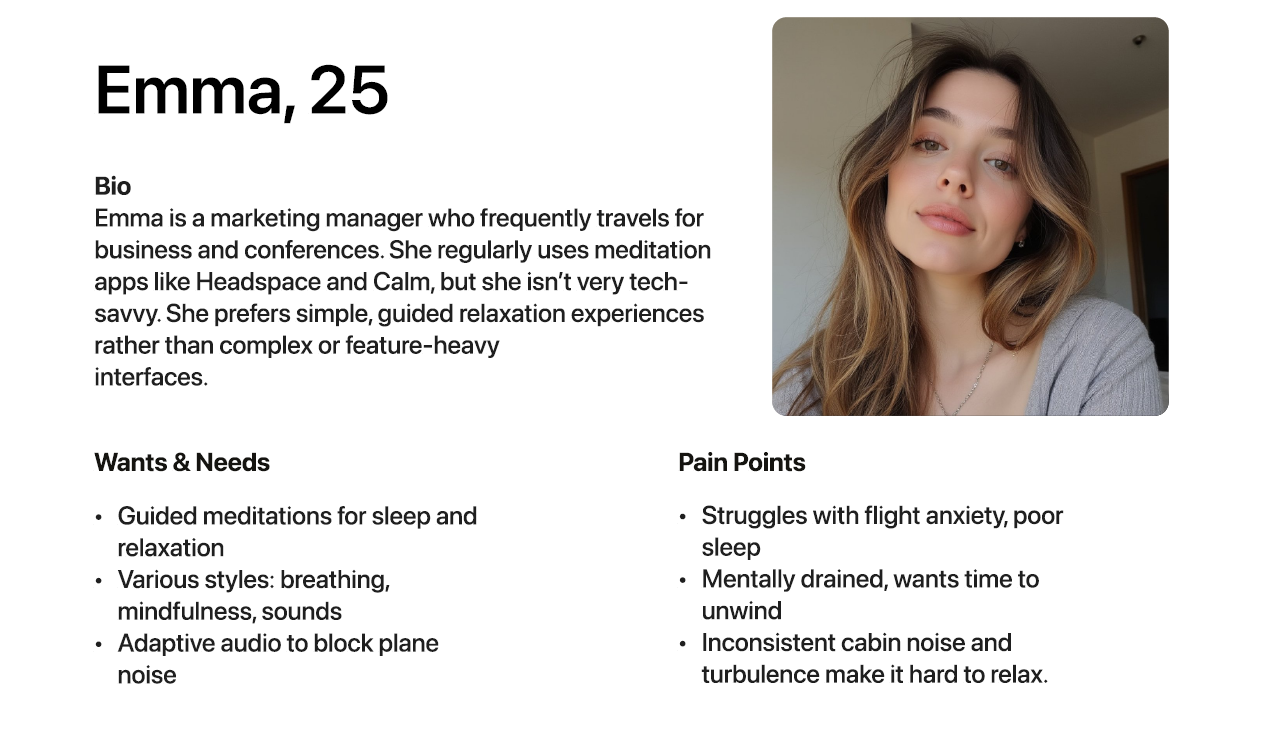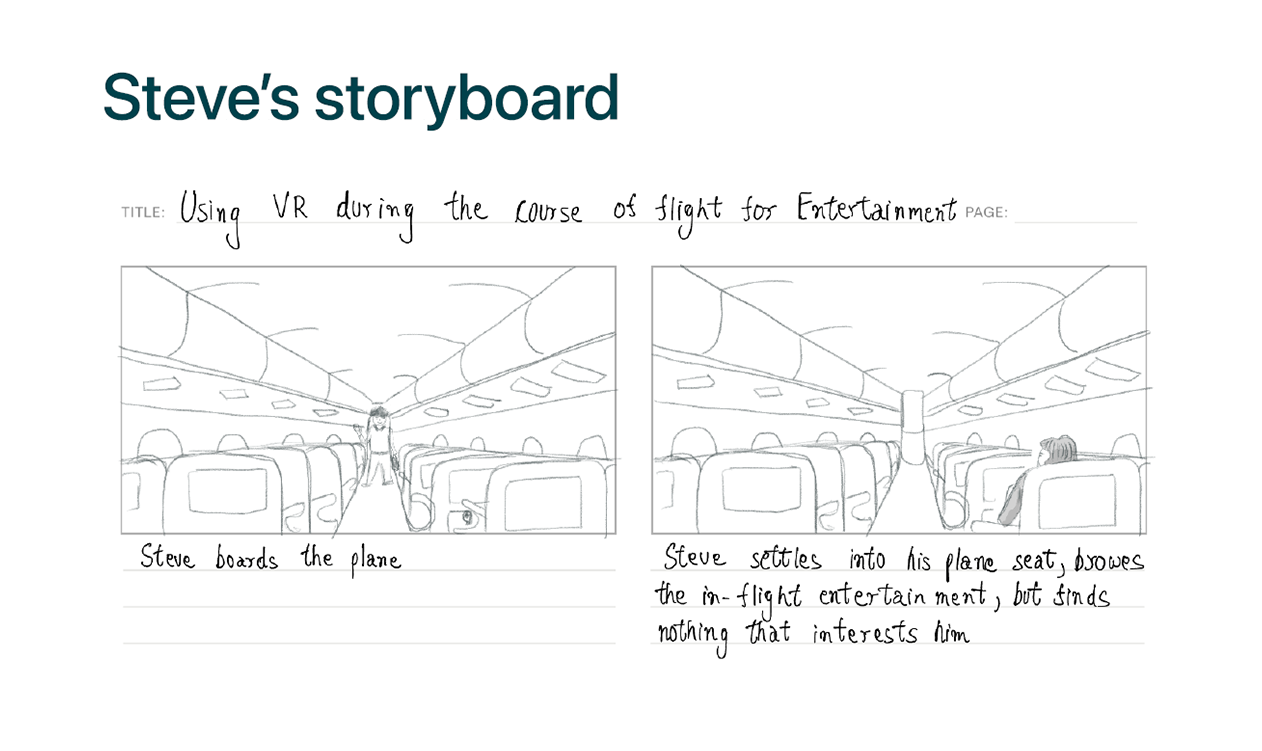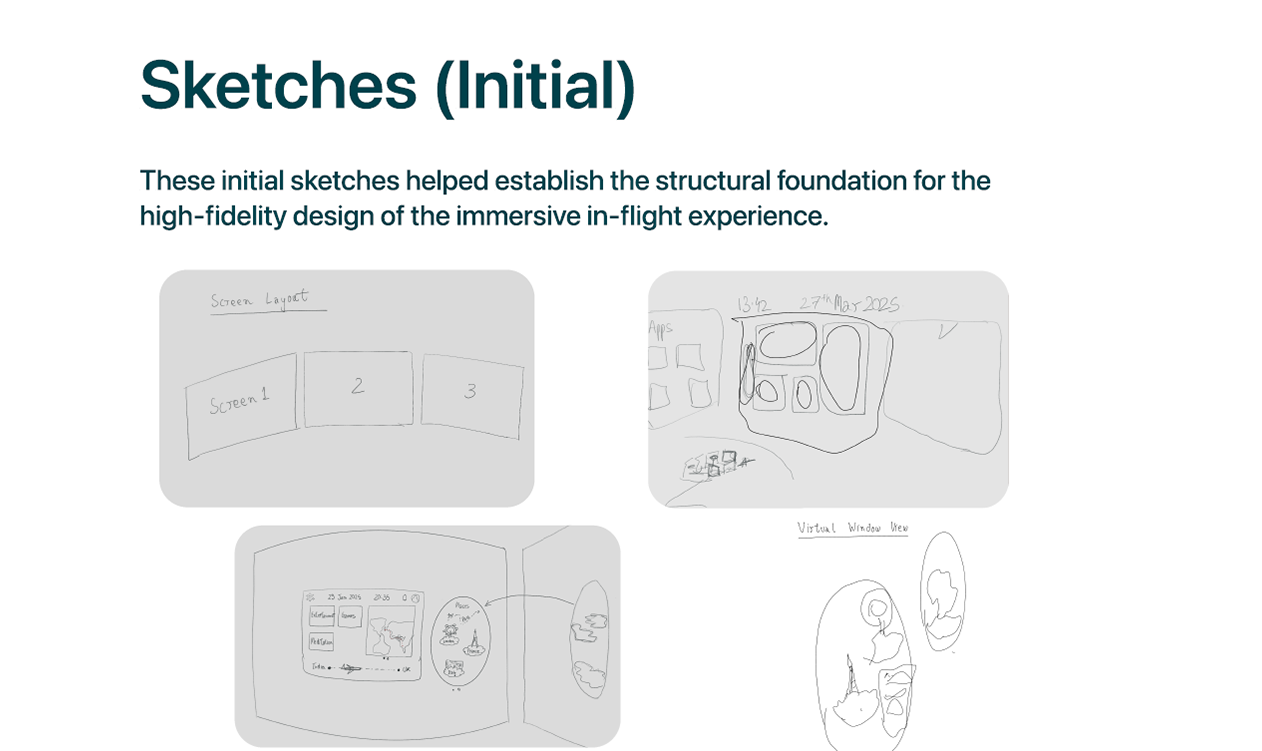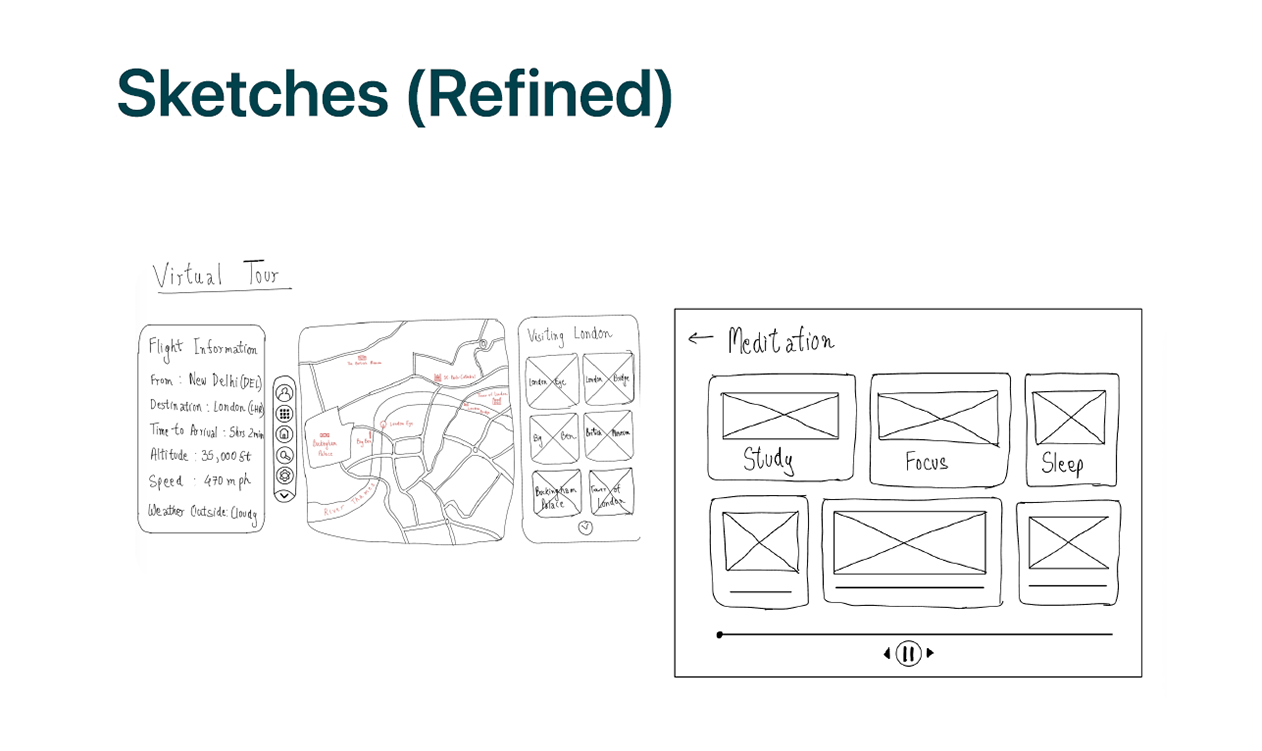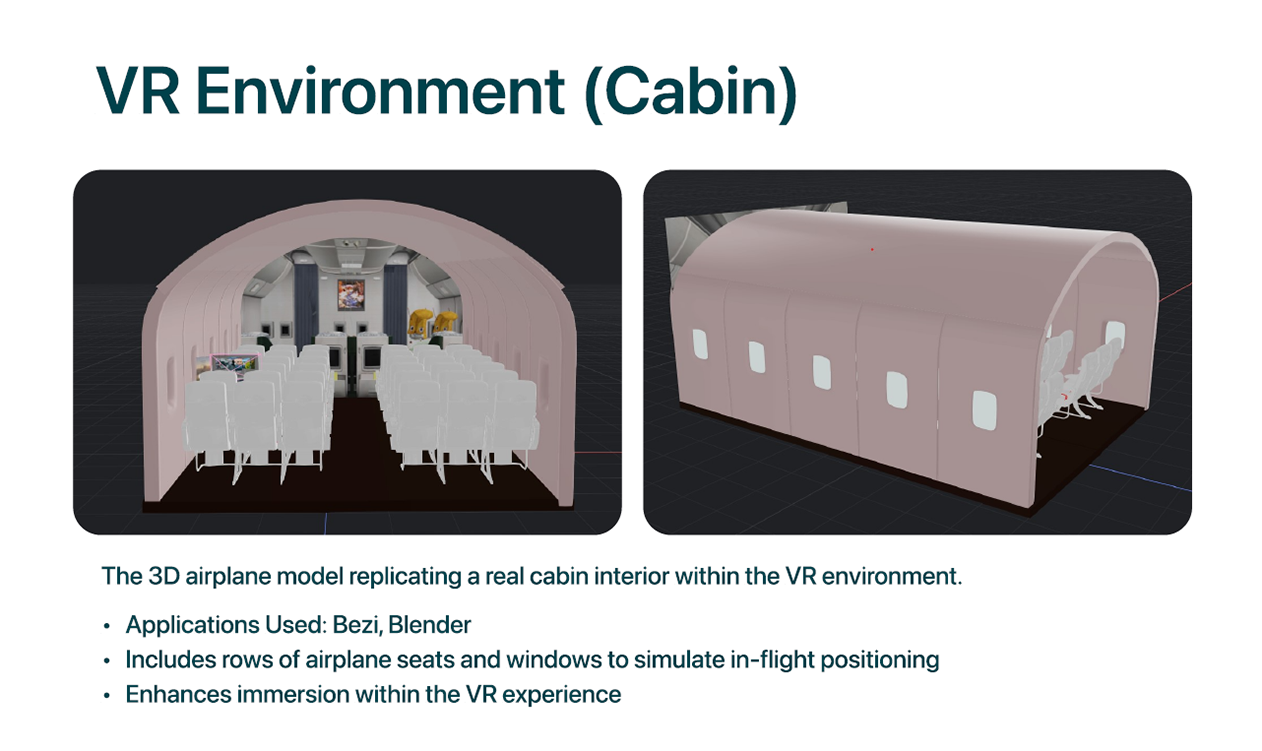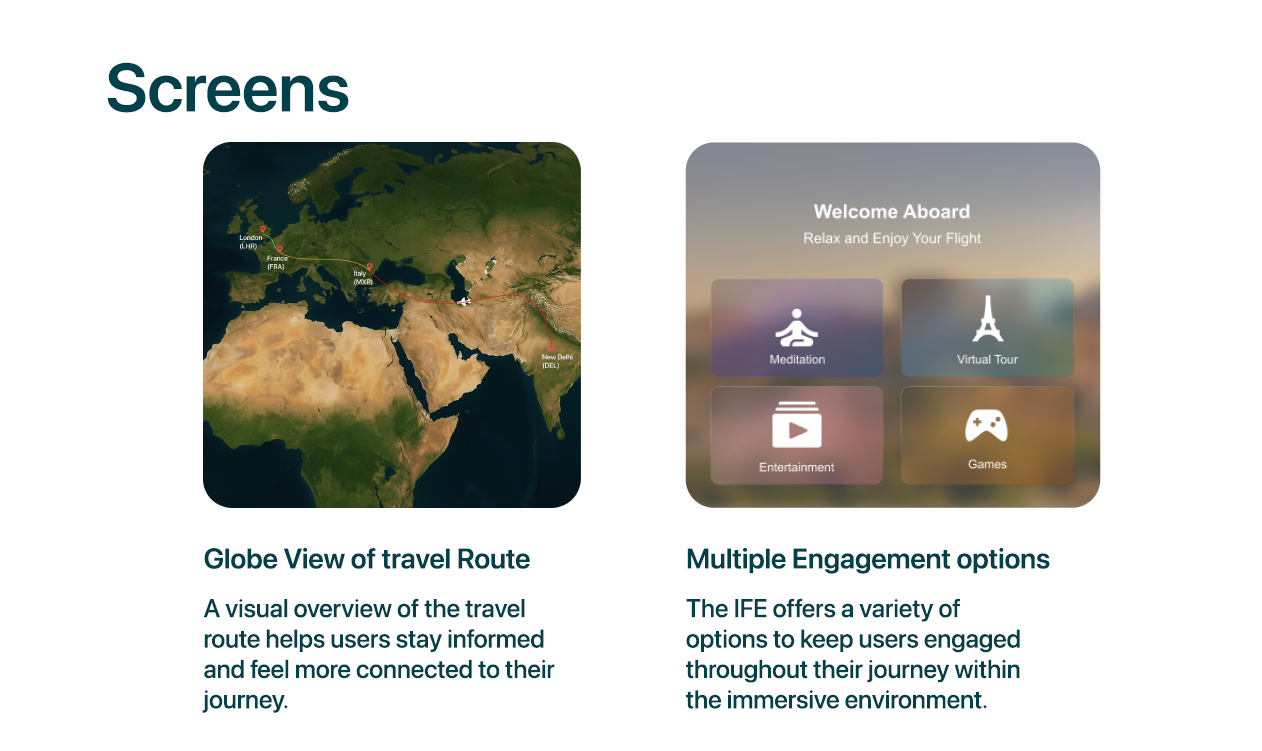To address the challenges faced by Steve and Emma, we decided to design a VR experience for the Meta Quest 3, chosen for its wireless, standalone design and advanced mixed-reality capabilities, making it ideal for a confined in-flight environment.
From a passenger perspective, the app would offer a variety of options, from immersive virtual tours and guided meditations to standard entertainment like movies and games, all within a calming and intuitive 3D environment.
User Flows & Storyboards
I created detailed storyboards to illustrate how our personas would interact with the system. Steve's storyboard focused on his desire for entertainment and exploration, showing him Browse the VR interface, selecting a virtual tour of his destination city, and feeling as if he'd been teleported there. Emma’s storyboard centered on her need for relaxation, showing her using a guided sleep meditation with calming 360° visuals to fall into a restful state and make the flight less stressful.
Early Sketches & Prototypes
Our first sketches helped establish the structural foundation for the interface, exploring different screen layouts and the placement of key features. We created rough drawings of the main menu, notification system, and the "virtual window" concept.
During early conceptual testing, a key piece of feedback emerged: users wanted to feel aware of their flight's progress without breaking the immersion. This led us to refine the design to include a persistent but unobtrusive flight information panel that would be visible across all screens, a feature that became central to the final high-fidelity design.
High-Fidelity Design
I iterated on the designs after feedback, creating high-fidelity screens that defined the project's visual identity. The final design features a calming color palette of purples and blues and uses the SF Pro Display font for its high legibility on digital interfaces. Key screens were designed to be intuitive and informative, including the main "Welcome Aboard" menu, a globe view of the travel route, detailed landmark information for virtual tours, and a visual interface for meditation.
User Evaluation
We conducted in-person user testing with 5 participants in a semi-controlled environment to replicate the flight experience. Using a "think aloud" protocol, we gathered qualitative feedback on a prototype.
In general, Sky View was extremely well-received. Participants praised the ability to see a pilot's POV without a window seat and the convenience of having persistent flight information. The immersive environments were described as a significant upgrade over traditional IFE screens.
For me, this project highlighted the critical need to balance innovative features with real-world user comfort and technological feasibility. A feature can be brilliant in isolation, but its context of use is paramount. It also reinforced the value of team collaboration and defining processes from the outset, which was a critical turning point that allowed us to design much more effectively.

